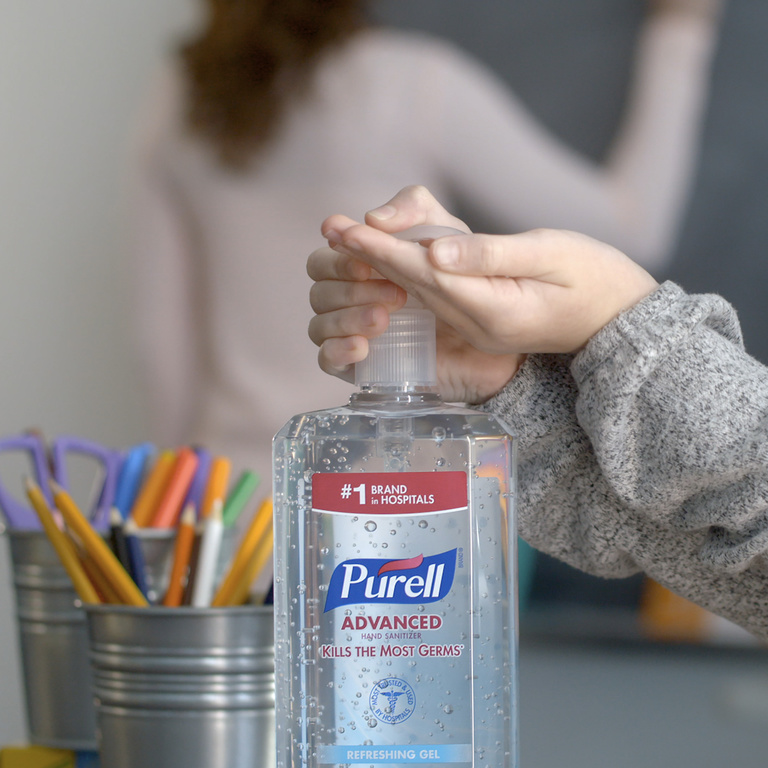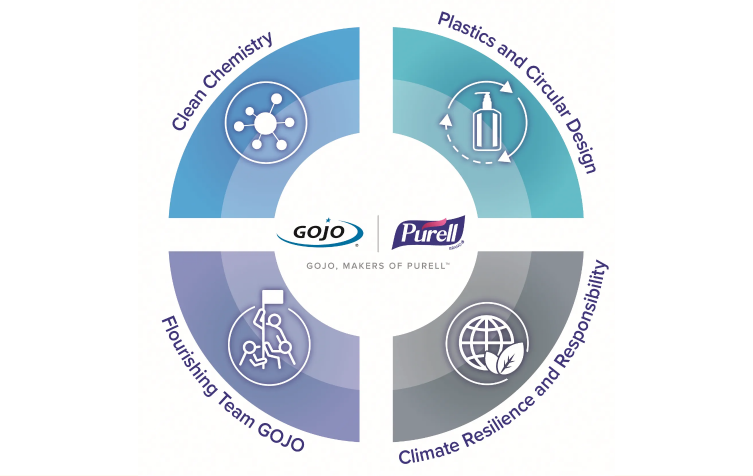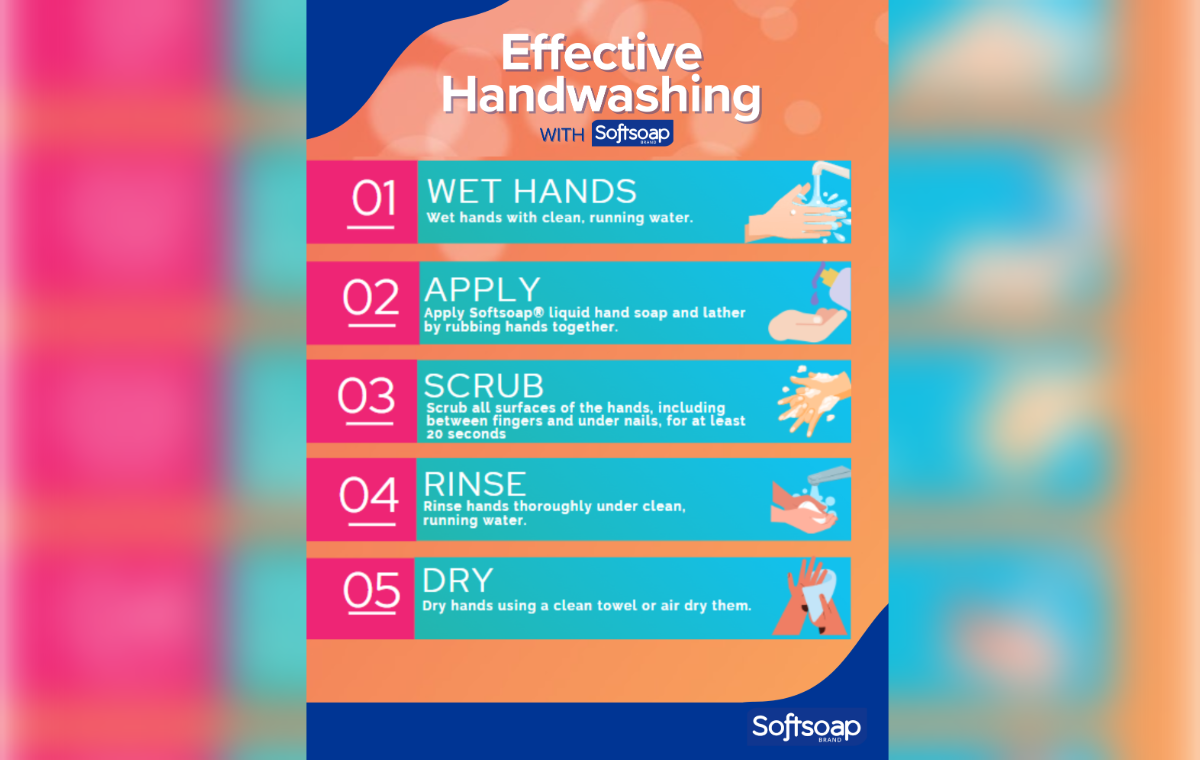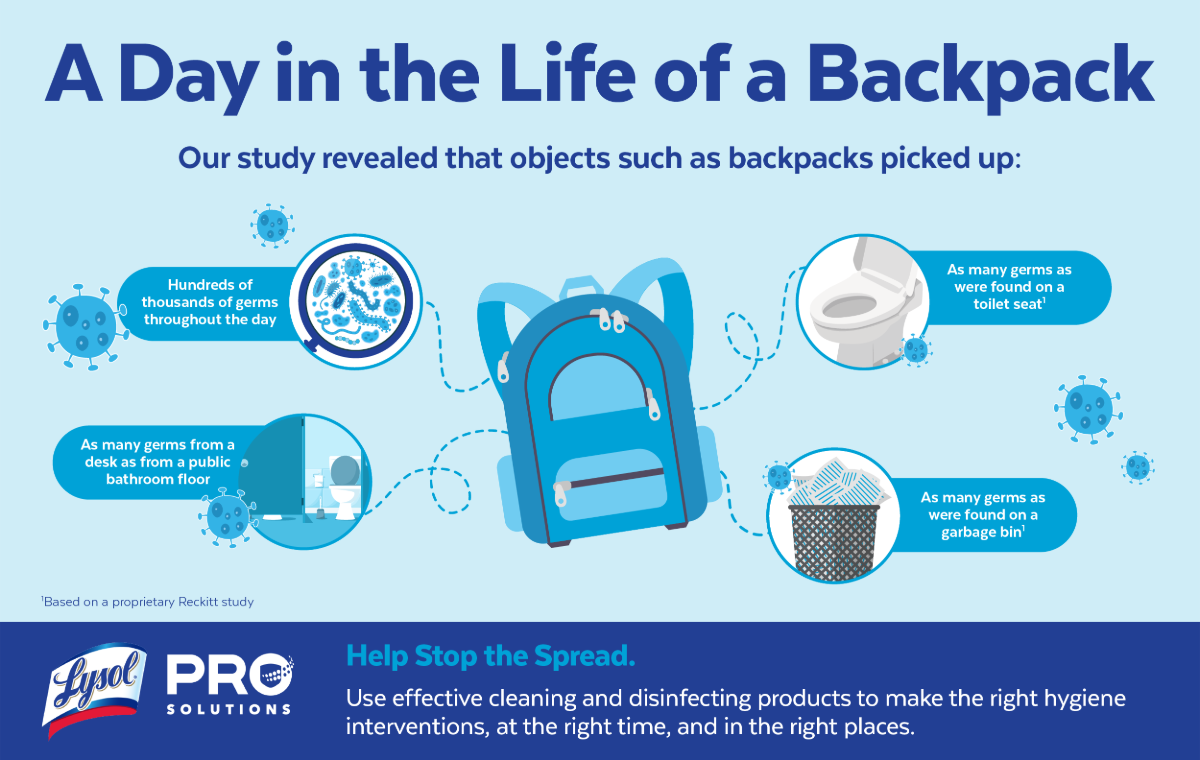As summer winds down, parents are digging out their children’s supply lists for back-to-school shopping, and teachers are stocking up their classrooms. But back to school also means back to germs. As students and staff gather indoors, touching germy shared surfaces all day, it’s important they’re cleaning their hands throughout the day. An easy and convenient way to help keep hands clean is to ensure students have access to hand sanitizer at school.
Many schools will continue to provide hand sanitizer for students’ use – especially in common spaces – but it may not be easy to access in all the moments that matter, like before snack time or lunch or moving in-between classrooms. Consider sending your child to school with sanitizer for personal use or bottles to share in the classroom to help keep hands clean throughout the day.
What to look for in hand sanitizer for the classroom
Whether stocking up classrooms for the upcoming school year or preparing your children for the school day, it’s important to choose hand sanitizers that are effective at killing germs, safe for students, convenient to use, and feel good to use. Here are a few things to look out for:
- Alcohol-Based Hand Sanitizers: This is the most common type of hand sanitizer and is widely used in schools. Hand sanitizers made with ethanol or isopropyl alcohol are effective in killing the most common germs and do it faster than non-alcohol sanitizers (15 seconds vs. 30-60 seconds). Look for hand sanitizers with an alcohol content of at least 60%. For more reasons why to choose alcohol-based hand sanitizers, read the blog, “3 Reasons Why Ethyl Alcohol-Based Hand Sanitizers are More Effective.”
- Safe for Children: Choose a trusted brand to ensure it’s made of high-quality ingredients. Check the ingredient list for potential allergens or irritants that may affect your child. Keep in mind that fragrances are the most common irritant in personal care products. Children are more prone to dry, irritated, cracked hands, and many suffer from eczema. Some sanitizers include ingredients like aloe to help soothe skin. Also, ensure the hand sanitizer is not on the FDA’s list of more than 600 hand sanitizers to avoid. Thankfully, those sanitizers are off store shelves now, but if you are thinking about donating any leftover hand sanitizer bottles, read this blog post about why you should dispose of them safely instead. Remember that children under six should be supervised when using hand sanitizer.
- Non-Sticky, and Fast-Drying: Children are more likely to regularly use it if they like the consistency, feel, and smell of it, so select a hand sanitizer that isn’t sticky. Choose one that dries quickly (15-20 seconds), so they can return to their activities sooner.
- Fragrance-Free or Mild Fragrance: Fragrance-free hand sanitizers are generally a good choice, especially for children with sensitive skin or allergies. If your child has no sensitivities, you may opt for a sanitizer with a mild, pleasant fragrance. When providing products to share, though, consider that teachers often prefer fragrance-free sanitizers, as strong scents can be distracting or trigger allergies in some students.
- Bottle Size: Large pump bottles are great for sharing in the classroom. For students older than six, parents can send travel-sized bottles with their kids to attach to backpacks or tuck into lunch boxes or pockets for quick access whenever needed. For students heading back to college, stock them up with both.
- Formulations That Meet Your Personal Needs: To help you not be overwhelmed by the options, here are some basic tips on the different formulas available. Want a moisturizing sanitizer that will help maintain your skin health? Look for ones that contain aloe, glycerin, or vitamin E. Prefer natural products? Look for sanitizers containing plant-based ethanol and don’t contain any dyes. Want a refreshing scent and don’t have sensitivities to fragrances? Look for sanitizers containing essential oils as a more natural way to fragrance.
Are there any hand sanitizers to avoid?
Kids are always in a rush, so hand sanitizers should be quick and easy to use correctly so that they are “fail-proof.” Unfortunately, some products may not be up for this task:
- Non-alcohol-based sanitizers: Non-alcohol sanitizers often use alternative ingredients – like benzalkonium chloride (or “BAC”) to kill germs. Benzalkonium chloride sanitizers can be effective in killing certain types of germs when used correctly. It’s important to follow the manufacturer’s instructions for proper application and contact time – or how long the product must be on hands to kill germs. Benzalkonium chloride sanitizers may require longer contact times than alcohol-based sanitizers to achieve effective germ kill. Alcohol-based sanitizers work fast and are generally more effective against a broader range of germs, which is why they are recommended by the Centers for Disease Control (CDC).1
- Hand Sanitizers Leftover from the Early Days of the Pandemic. Hand sanitizers purchased in 2020, when there was much demand, are likely nearing or past their expiration date – and some may not even contain an expiration date. The FDA loosened their manufacturing and safety requirements in March 2020 to allow new manufacturers to help meet the demand. This unfortunately led to many safety and efficacy issues and that still-growing FDA list of almost 600 hand sanitizers to avoid. Thankfully, that temporary manufacturing guidance ended at the end of 2021, but many still have some bottles left and may be wondering if they’re safe to use. Read the blog “Does Hand Sanitizer Expire?” for more information.
- Unproven Sanitizers. There are many hand sanitizers in the market, including some newer and trendy spray or mist formats that dispense very little product in each pump. It’s essential to remember that to effectively kill germs, any hand sanitizer must completely cover all surfaces of both hands and dry in about 15-20 seconds. Most kids (and adults) only use one or two – perhaps up to three – sprays of product in one usage, but with some of these sprays, it’s impossible to get enough product on hands in just a few pumps and may actually require 10 pumps or more to cover hands with the product! Avoid products that don’t dispense enough product to completely wet hands in just 1-2 pumps. Also, many of these products contain strong fragrances that may irritate hands or aggravate allergies.
To help K-12 students understand the importance of hand hygiene and how objects hold germs, GOJO scientists developed some simple, hands-on experiments. These age-appropriate experiments are designed for kindergarten-2nd grade, 3rd-6th grade, and 7th-12th grade. Some of these experiments can even be conducted at home. Download these free experiments by visiting the PURELL® Brand K-12 Well-Being Center.
Available PURELL® solutions
As you’re stocking up on your child’s supply list for back-to-school season, set them up for success with hand sanitizers that are safe and effective that they’ll enjoy using. PURELL® Hand Sanitizer, America’s #1 hand sanitizer*, is available in a variety of sizes and formulas at stores nationwide.
The PURELL PROMISE™ guarantees that PURELL® hand sanitizer is made of only high-quality ingredients, is manufactured according to strict FDA safety and regulatory standards, and has passed rigorous testing to ensure it is safe and effective, even for students. Consider sending your child back to school with these PURELL® hand sanitizers:
- PURELL® Advanced Hand Sanitizer: Send your child with a pump bottle for the classroom. PURELL® Advanced Hand Sanitizer quickly kills 99.99% of the most common germs that may cause illness.
- PURELL® Advanced Hand Sanitizer Portables: Perfect for your child’s backpack to use after they get off the bus. This portable option allows children convenient access when they need to kill germs in a hurry.

This content was provided by GOJO.
*IRI Total U.S. – Multi Outlet. For 52 Week Period Ending 7/31/22, Retail Dollar Sales, Total Hand Sanitizer Liquids; Online survey of 1,000 US adults, October 2021.
1. Centers for Disease Control. https://www.cdc.gov/handwashing/faqs.html#hand-sanitizer-and-wipes. Accessed 07/06/2023.






